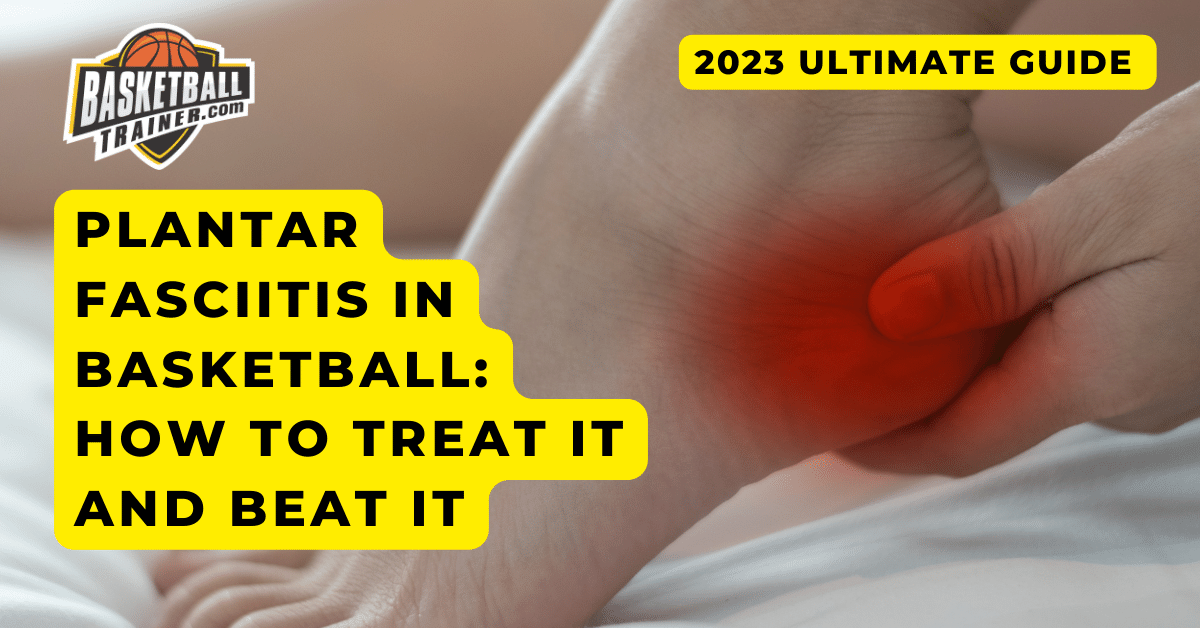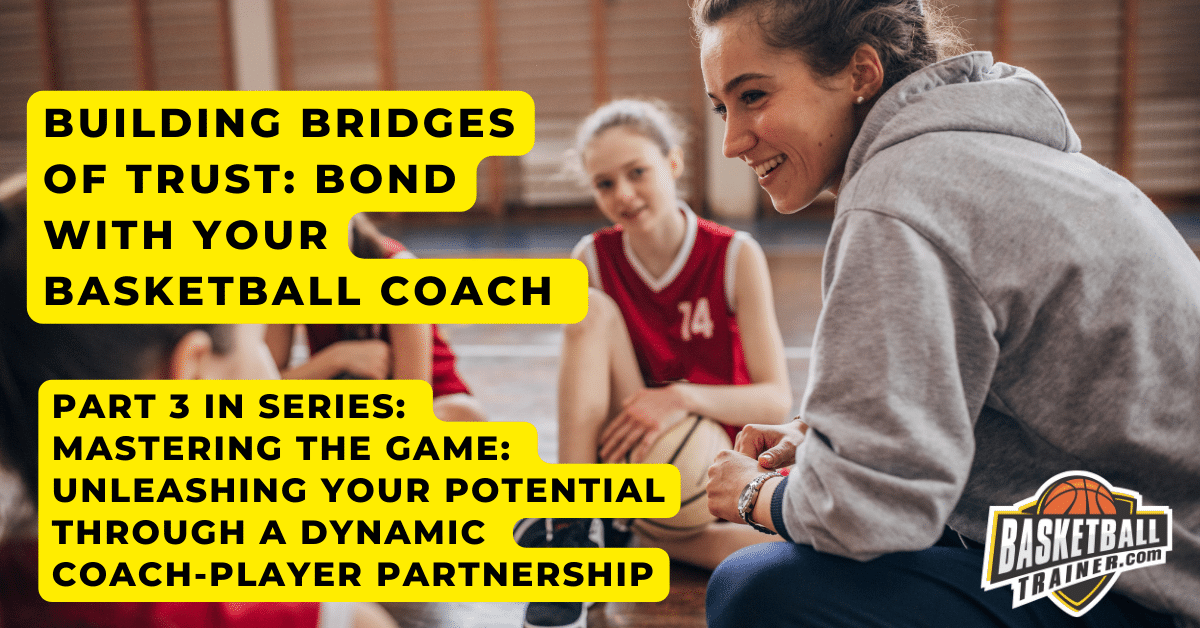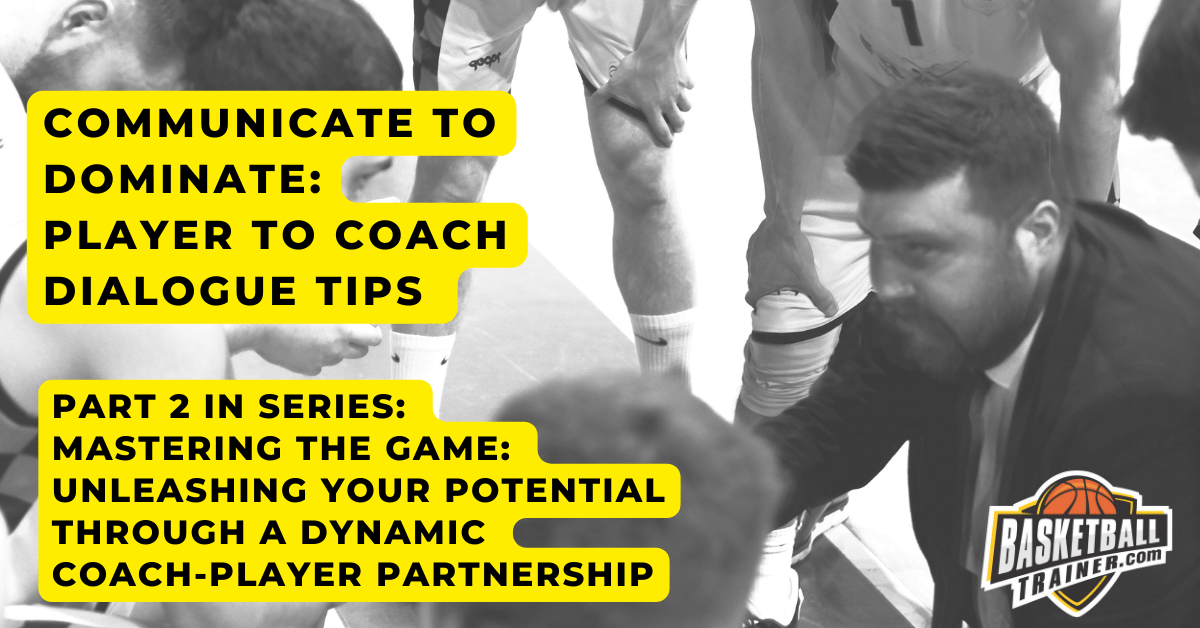
Individual basketball shooting drills are a fundamental part of any serious player’s training regimen. These drills help to develop precision, consistency, and the ability to perform under pressure. However, simply knowing how to shoot is not enough – understanding the mechanics behind each shot can significantly boost athletic performance.
In this comprehensive guide, we will delve into various individual basketball shooting drills that can enhance your game skills. From fundamentals of shooting technique and building a strong foundation to advanced techniques and tracking progress, our aim is to support athlete safety mental health while promoting growth on the court.
We’ll also discuss filming workouts for further analysis and introduce you to some apps designed specifically for these drills. With proper off-season basketball planning and consistent movement in practice sessions, you’re sure to see improvements over time.
Table of Contents:
- I. Introduction
- II. Fundamentals of Shooting Technique
- III. Building a Strong Shooting Foundation
- IV. Shooting Drills for Game-Like Situations
- Advanced Shooting Techniques
- VI. Tracking Progress and Improvement
- Filming Your Basketball Shooting Drills: Lights, Camera, Action.
- VIII. Apps To Aid Individual Basketball Shooting Drills
- IX. Next Steps
- FAQs in Relation to Individual Basketball Shooting Drills
- Conclusion
I. Introduction
Whether you’re a seasoned pro or just starting out, individual basketball shooting drills are a must. These exercises are crucial for players of all ages and skill levels who want to up their game and dominate on the court.
Great shooters like LeBron James and Stephen Curry didn’t become legends by luck – it’s their relentless training that made them the best in the business.
A. Importance of Individual Basketball Shooting Drills
Through individual shooting drills, basketball players can refine their accuracy and technique to better hone the precision of various shots. From layups to three-pointers, these drills help players develop a feel for different shots while improving muscle memory.
B. Benefits for Players of All Ages and Skill Levels
No matter your age or experience, shooting drills offer numerous benefits. They enhance hand-eye coordination, build endurance, and boost confidence in taking shots during games.
C. The Impact of Great Shooters and Their Training Routines
Great shooters can change the game with one well-placed shot. But what sets them apart? It’s their commitment to practice – spending hours every day working on their shot using specific drills. This dedication translates into improved performance during games as muscle memory kicks in.
Example.com, an industry leader in player development, connects ambitious players with expert trainers and training products designed to enhance skills.
II. Fundamentals of Shooting Technique
The key to becoming a great shooter in basketball starts with mastering the fundamentals of shooting technique. Whether you’re right-handed or left-handed, nailing these basics can seriously up your shot game.
A. Shooting form and body positioning
Proper shooting form begins with the right hand placement and grip on the ball. For right-handed shooters, put your right hand behind the ball while your left hand supports it from the side. Lefties, just do the opposite.
Good footwork is also crucial for balance when taking shots. Keep your feet shoulder-width apart, slightly staggered, with your dominant foot (same side as your shooting arm) slightly forward.
B. Developing consistent shooting motion
Your guide hand helps control the ball’s direction, but it shouldn’t add force to the shot. That’s where leg power comes in.
- Utilizing Guide Hand: Make sure it doesn’t interfere by pushing or twisting during release; let it fall away naturally after providing initial guidance.
- Focusing on Elbow Alignment: Keep your elbow pointed towards the basket at approximately a 90-degree angle – this helps direct energy straight toward the target.
- Drawing Power from Legs: Remember, most power comes from your legs, not your arms – bend your knees before jumping up into the shot for maximum force generation.
To further develop consistency in your shooting motion, practice using various basketball drills. These exercises reinforce muscle memory through repetition, making every shot feel natural and effortless over time.
The fundamental aspects of basketball shooting techniques may seem simple, but they require dedication and continuous practice to master fully. Once mastered, they serve as solid building blocks towards becoming a proficient shooter capable of making high-pressure shots during game situations.
Key Takeaway:
Mastering the fundamentals of shooting technique is essential for becoming a great basketball shooter. This includes proper hand placement and grip, good footwork for balance, utilizing the guide hand effectively, focusing on elbow alignment, drawing power from the legs, and practicing with various drills to develop consistency. Continuous dedication and practice are necessary to fully master these techniques and become a proficient shooter capable of making high-pressure shots during games.
III. Building a Strong Shooting Foundation
A strong shooting foundation is the key to becoming a baller on the court. It’s all about nailing the basics and shooting with consistency.
A. Form shooting drills for muscle memory
To build a solid foundation, start with form shooting drills. These drills help your muscles remember the right moves and improve your accuracy.
- Shooting from the key: Master hand placement, grip, footwork, and balance by shooting from different spots in the key.
- Shooting from the free-throw line: Practice shooting under pressure with consistent mechanics, just like in a real game.
B. Enhancing shooting range and accuracy
Don’t stop at good form. Push yourself to improve your range and accuracy with targeted practice sessions.
- Three-point shooting drills:
- a) Shooting from the corners: Expand your range while keeping that sweet form intact.
- b) Shooting from the wings: Work on quick releases and accurate aim, even with defenders in your face.
- Mid-range shooting drills:
- a) Shooting from the baseline: Mix it up with inside drives and outside jumpers to keep the defense guessing.
- b) Shooting from the foul line area: Nail those critical shots consistently to secure those close game victories.
By mixing up your practice regimen with these shooting drills, you can develop a strong foundation that will help you succeed in both training and games.
IV. Shooting Drills for Game-Like Situations
The ability to adapt and execute your shooting skills in a real game situation is what separates great shooters from good ones. To help you achieve this, we’ve compiled some drills that simulate game-like situations.
A. Shooting off the Dribble
Dribbling before taking a shot can throw off defenders and create open opportunities for scoring. The key here is fluidity – seamlessly transitioning from dribbling to shooting.
- Incorporating right-hand dribbles into shots: Start at the top of the key, take two hard dribbles with your right hand towards the basket, pull up quickly and shoot. source
- Incorporating left-hand dribbles into shots: Similar to above but use your left hand instead.
B. Shooting on the Move
Moving without possession of the ball then catching it in stride to shoot is an essential skill every player should master.
- Utilizing curl cuts for open shots: Set up cones or markers around which you’ll run (curl) before receiving a pass and immediately shooting. source
- Utilizing spin outs for separation: This drill involves spinning out from under a defender’s arm while maintaining balance enough to catch a pass and shoot instantly. source
C. Shooting in Different Court Positions
Varying where you take your shot on the court during practice helps improve versatility as well as confidence when playing different positions during games.
- Taking Shots From The Right Side: You can start by positioning yourself near the baseline on the right side of the court, receive a pass, and attempt a jump shot. source
- Taking Shots From The Left Side: This drill mirrors the previous one except the position starts near the baseline on the left side of the court. source
Key Takeaway:
This section focuses on shooting drills for game-like situations in basketball. It includes drills for shooting off the dribble, shooting on the move, and shooting from different court positions to improve versatility and confidence during games. Key takeaways include practicing fluid transitions from dribbling to shooting, mastering curl cuts and spin outs for open shots, and varying shot locations on the court for improved adaptability.
Advanced Shooting Techniques
Mastering advanced shooting techniques can level up your basketball game. These techniques help you shoot accurately under pressure and at game speed.
Mastering the Jump Shot Technique
The jump shot is a must-have skill for serious ballers. It involves jumping while shooting, making it harder for defenders to block your shots.
- Footwork and Jump Stop Fundamentals: Nail the footwork to execute a killer jump shot. Master the jump stop to maintain balance during the shot.
- Proper Upper Body Mechanics and Follow-Through: Control the direction of your shot with your upper body. A solid follow-through directs energy towards the basket.
Shooting Under Pressure and At Game Speed
To be a clutch shooter, practice under game-like conditions.
- Competitive Shooting Drills with Time Limits: Simulate high-pressure situations with time limits. Score within limited time frames to amp up the pressure.
- Simulating Game Situations for Mental Focus: Mental focus is crucial for important shots under pressure. Incorporate mental toughness training exercises to improve concentration on the court.
By utilizing these cutting-edge strategies in your practice regimen, you can sharpen your abilities and be a valuable asset to your squad’s triumph on the court.
VI. Tracking Progress and Improvement
In the journey of becoming a better shooter, it’s crucial to keep track of your progress. Not only does this provide you with tangible evidence of improvement, but it also helps identify areas that need more work.
A. Importance of tracking shooting statistics
Keeping tabs on your shooting statistics is an integral part of player development. By tracking your shooting stats, you can gain a better understanding of where you excel and what needs further improvement.
You should be monitoring both your field goal percentage (FG%) and three-point percentage (3P%). These metrics give insight into overall shooting efficiency as well as long-range proficiency respectively.
B. Analyzing shooting percentages and areas for improvement
Analyzing these stats can help pinpoint specific weaknesses in your game. If your FG% is low, it may mean you’re chucking up bad shots or your technique needs work. A low 3P% could mean you’re missing the mark from downtown.
- If you’re making bad shot choices, work on decision-making drills. Don’t be a ball hog.
- If your technique is off, go back to the basics with form shooting drills. It’s all about that sweet stroke.
- To improve your long-range game, practice shooting threes until you’re raining buckets from downtown.
Tracking improvements over time also serves as motivation during those tough training days when progress seems slow – seeing how far you’ve come can provide that extra push needed to keep going.
The key takeaway here? Don’t just practice blindly – use data-driven insights gleaned from careful analysis of your personal basketball shooting statistics for targeted skill enhancement.
Filming Your Basketball Shooting Drills: Lights, Camera, Action.
Improve your shooting skills by filming your basketball shooting drills. It’s like having your own personal coach, minus the whistle and the yelling.
Lights, Camera, Shoot.
Set up your camera at different angles to capture all the action. You don’t need fancy equipment, just a smartphone or a decent action camera will do the trick.
Lights, Camera, Review.
Take a break after each session to review the footage. Slow-motion playback is your friend, thanks to apps like Hudl Technique. It’s like having a superpower to dissect your every move.
Notes and Adjustments: Take Two.
Take notes on any issues you spot while watching yourself shoot. Elbow alignment problems? Inconsistent leg power? Use these notes to make adjustments in your next training session.
Consistency is Key.
- Make filming a regular thing – once a week is ideal.
- Film consistently over time to track your progress.
- See if your improvements are paying off by comparing footage over several weeks or months.
Lights, camera, action. Filming your drills provides visual evidence of your progress. It’s like watching a movie where you’re the star, and the happy ending is your improved shooting skills.
VIII. Apps To Aid Individual Basketball Shooting Drills
In the modern era, tech has become a fundamental element of basketball instruction and player growth. Various apps are available that can assist ambitious players in honing their shooting skills through individual basketball shooting drills.
One such app is HomeCourt. This innovative app uses AI to track your shots, providing real-time feedback on aspects like shot form, release time, and jump height. When you don’t have access to a coach or trainer, HomeCourt can be an invaluable tool for self-improvement.
Another useful application is DribbleUp. While it’s primarily designed for dribbling workouts, it also includes several shooting drills that can be beneficial for improving accuracy and consistency.
Basketball Training by Hustle:
This comprehensive training app offers numerous video tutorials covering various aspects of the game including shooting techniques and drills. The interactive nature of this app makes learning fun while ensuring steady progress.
Noah Basketball Shooting System:
A more advanced option which provides detailed analytics about your shot arc, depth, and left-right position on the rim using sensors installed on your hoop.
SloMo Video Analysis:
An excellent tool for analyzing your own shot mechanics frame-by-frame at slow speed to identify any flaws or inconsistencies in technique.
All these applications offer unique features that cater to different needs but share one common goal: helping you improve as a shooter. They provide immediate feedback so you can make necessary adjustments right away instead of waiting until after practice or games when bad habits may already have been formed.
The convenience offered by these apps cannot be overstated – they allow you to train effectively even without access to a gym or court. However, remember that no amount of tech can replace hard work and dedication; use these tools as supplements rather than substitutes for regular practice sessions with trainers or teammates.
Key Takeaway:
Various apps are available to assist basketball players in improving their shooting skills through individual drills. These apps, such as HomeCourt and DribbleUp, provide real-time feedback on shot form and offer interactive tutorials for steady progress. They can be used as supplements to regular practice sessions with trainers or teammates but should not replace hard work and dedication.
IX. Next Steps
The journey to becoming a great shooter in basketball is an ongoing process that requires consistent practice, dedication, and the willingness to push beyond your comfort zone. After mastering individual shooting drills, it’s time to take your training up a notch with these next steps.
1. Work with a Trainer
Don’t go it alone. Get a basketball trainer to guide you. They’ll give you personalized feedback and keep you motivated. Plus, they’ll help you fix any shooting weaknesses and suggest exercises to improve.
2. Partner Shooting Drills with Defense
Spice up your shooting drills by adding some defense. It’ll make your practice more game-like and improve your decision-making skills. Shoot under pressure and learn when and where to take shots during games.
a) One-on-One Drills
Challenge yourself by playing one-on-one against a defender. Practice your shots from different places on the court with this straightforward yet efficient drill.
b) Shell Drill
Get your whole team involved with the shell drill. The shell drill is a team-based activity that challenges both offensive and defensive strategies by having players pass the ball around the perimeter while defenders attempt to prevent successful shots. Pass the ball around the perimeter while defenders try to stop open shots.
3. Move Shooting Drill Focus into Scrimmage Work
Take what you’ve learned from individual drills and apply it in real game situations. Scrimmages help you develop spatial awareness, timing, and communication skills with your teammates. It’s all about understanding how defenses react to different offensive strategies.
Remember: Learning new techniques is great, but applying them in games is the real key to success.
FAQs in Relation to Individual Basketball Shooting Drills
1. Controversial basketball topics: Get ready for some heated debates and passionate arguments about the most controversial issues in the world of basketball.
2.
Conclusion
Get ready to shoot some hoops!
Here’s a comprehensive guide to individual basketball shooting drills that will take your skills to the next level.
First, let’s talk about the fundamentals of shooting technique – it’s all about that sweet form.
Now, let’s build a strong foundation with some basic drills that will make you a shooting machine.
Ready for some game-like situations? These drills will simulate real basketball scenarios and sharpen your shooting skills.
Feeling fancy? Try out these advanced techniques to add some flair to your shooting game.
Don’t forget to track your progress and film your workouts for analysis – you’ll be amazed at how much you can improve.
And hey, there are even apps out there that can help you with your individual basketball shooting drills – technology is on your side!
So, whether you’re an aspiring player, a supportive family member, or a coach looking to up your team’s game, these drills are a slam dunk.
Get out there, practice, and watch your shooting skills soar!





















